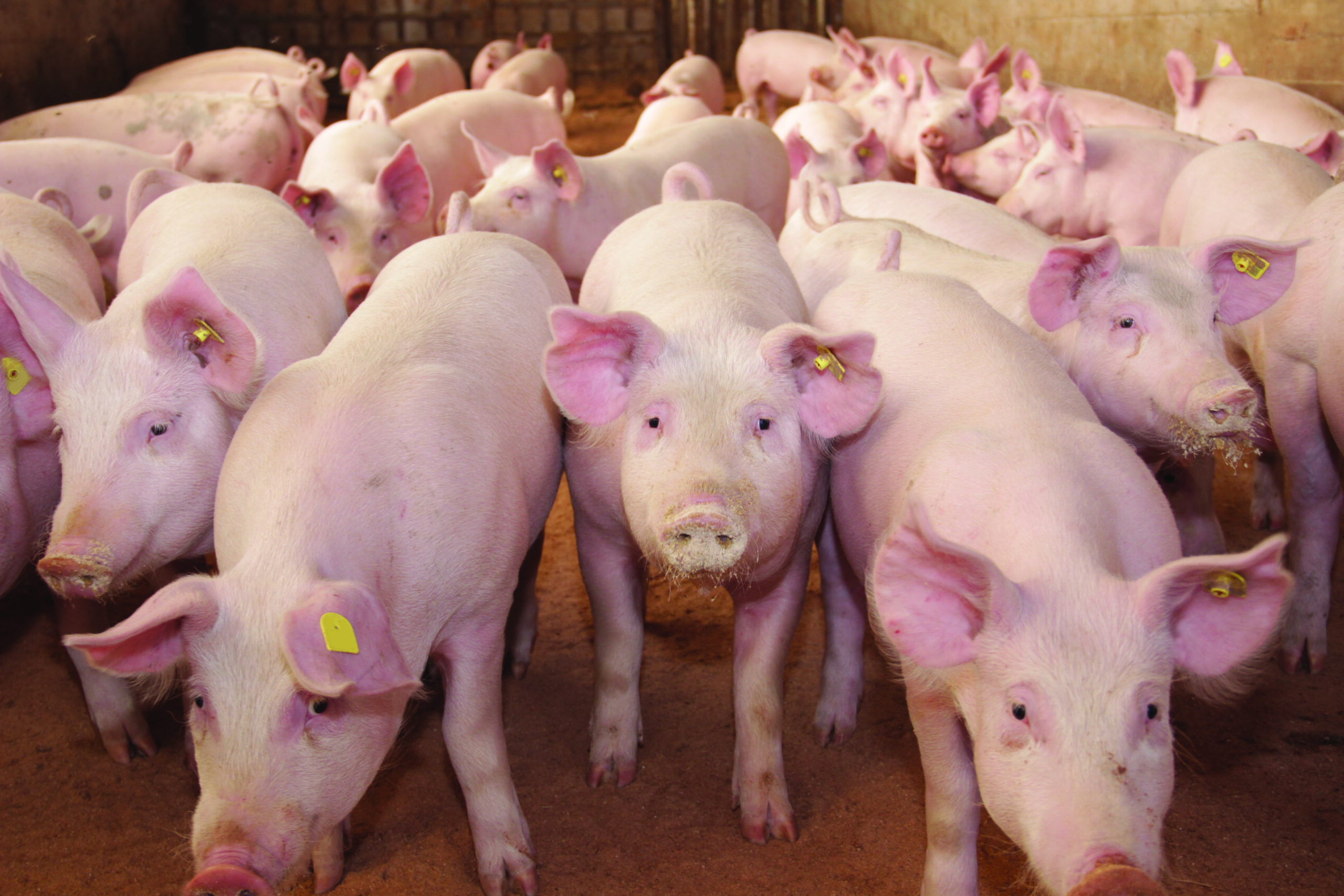Two experiments were conducted to determine the effects of increasing soybean meal (SBM) on late nursery pig performance. In Exp. 1, a total of 266 pigs (241 × 600 DNA; initially 22.2 ± 0.37 lb) were used in a 21-d trial with 14 replicate pens per treatment and 4 to 5 pigs per pen. Pens of pigs were randomly assigned to 1 of 4 dietary treatments which were corn-based with SBM levels of 25.0, 28.9, 32.5, or 36.2%. In Exp. 2, a total of 340 pigs (241 × 600 DNA; initially 29.8 ± 0.40 lb) were used in a 21-d trial with 14 replicate pens per treatment and 4 to 5 pigs per pen. Pens of pigs were randomly assigned to 1 of 5 dietary treatments which were corn-based with SBM levels of 25.0, 28.9, 32.5, or 36.2, or 40.0%. In both experiments, at weaning, pigs were distributed into pens based on body weight, gender, sow parity, and age. Before the start of the experimental period, pigs were fed a phase 1 followed by a phase 2 control diet. After 21 and 26 d for Exp. 1 and 2, respectively, pens of pigs were randomly allotted to treatments in a randomized complete block design with BW as the blocking factor. An addition of SBM replaced feed-grade amino acids (AAs) to form experimental diets and all diets were formulated to be nearly isocaloric with SBM NE considered to be 100% of corn NE. Dietary additions of feed-grade AA were adjusted to meet or exceed AA requirements in relation to Lys for Ile, Met, Cys, Thr, Trp, and Val. Diets were fed in meal form. In Exp. 1, increasing SBM from 25.0 to 36.2%, decreased ADG (linear, P = 0.012), ADFI (linear, P < 0.001), and final BW (linear, P = 0.021) with the greatest change occurring when SBM increased from 28.9 to 32.5%. No evidence for difference was observed for F/G (P = 0.729). In Exp. 2, starting with a heavier initial weight, increasing SBM from 25.0 to 40.0%, decreased ADFI (linear, P = 0.017) with the greatest change occurring when SBM increased from 32.5 to 36.2%. However, no evidence for difference (P ≥ 0.198) was observed for ADG, final BW, and F/G.
U.S. Soy Center for Animal Nutrition and Health

Effects of Increasing Levels of Soybean Meal in Nursery Diets on Growth Performance and Fecal Characteristics of 22- to 60-lb Pigs
Faccin, J., R. Goodband, M. Tokach, J. DeRouchey, J. Gebhardt and J. Woodworth
Share
This study showed that when pigs were fed high levels of SBM starting from 22 lb in the nursery period, pig performance was negatively affected. However, delaying the use of elevated SBM levels until pigs reach 30 lb resulted in reduced feed intake without impacting growth or feed efficiency. Thus, feeding up to 28.9% SBM for nursery pigs starting at 22 lb does not compromise performance, and starting pigs on higher SBM diets when pigs are closer to 30 lb did not affect ADG or F/G.
Faccin, J., R. Goodband, M. Tokach, J. DeRouchey, J. Gebhardt and J. Woodworth. 2023. Effects of Increasing Levels of Soybean Meal in Nursery Diets on Growth Performance and Fecal Characteristics of 22- to 60-lb Pigs. Kansas Agricultural Experiment Station Research Reports: Vol. 9: Iss. 7. https://doi.org/10.4148/2378-5977.8522.